THE ROYAL SHOW AT READING.
Page 17
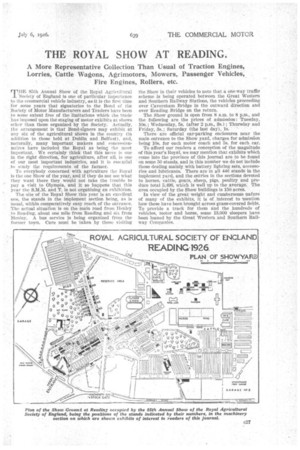
Page 19
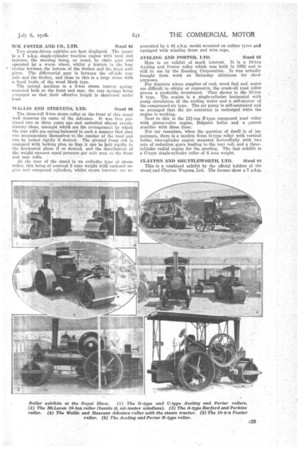
Page 18
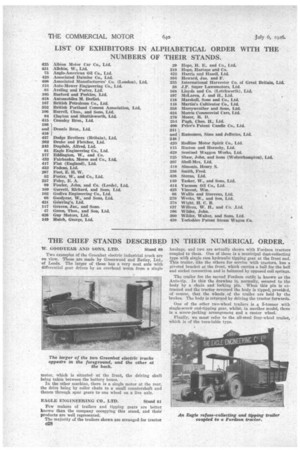
Page 20

Page 21
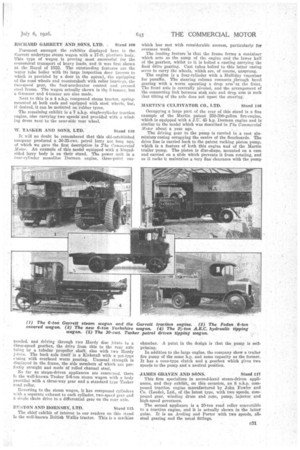
Page 22
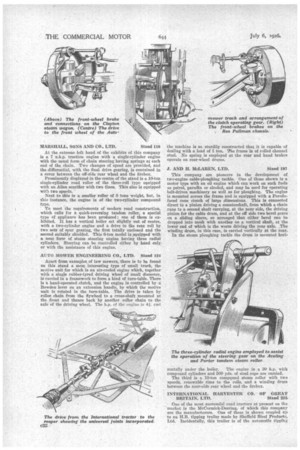
Page 23

Page 24
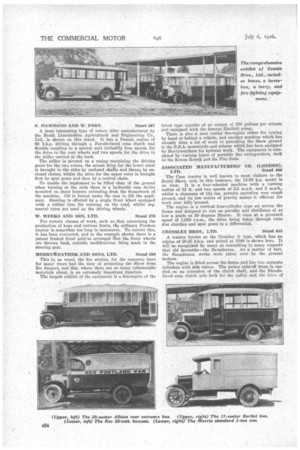
Page 25
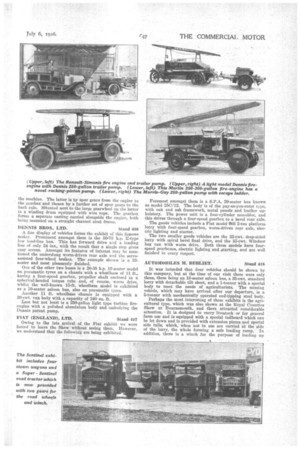
Page 26
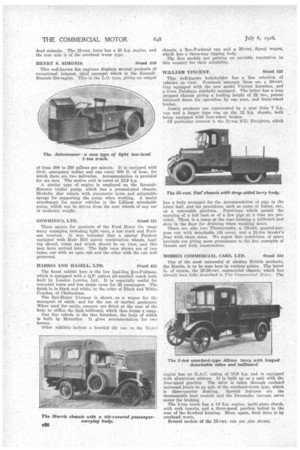
Page 27
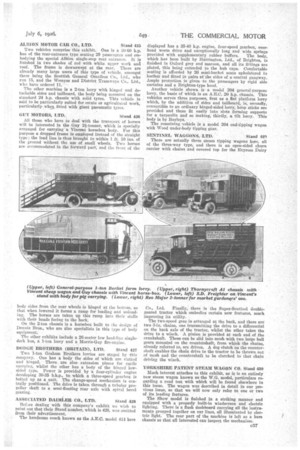
Page 28
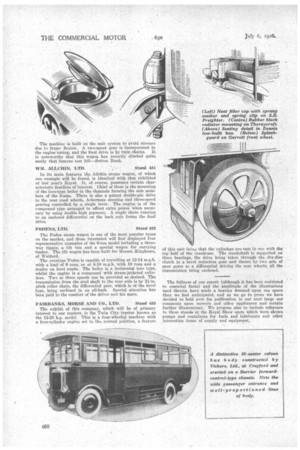
If you've noticed an error in this article please click here to report it so we can fix it.
A More Representative Collection Than Usual of Traction Engines, Lorries, Cattle Wagons, Agrimotors, Mowers, Passenger Vehicles, Fire Engines, Rollers, etc.
ruHE 85th Annual Show of the Royal Agricultural _I...Society of England is one of particular importance to the commercial vehicle industry, asit is the first time for some years that signatories to. the Bond of the 'Society of Motor Manufacturers and Traders have been o some extent free of the limitations which the trade has imposed upon the staging of motor exhibits at shows
• other than those organized by the Society. Actually, the arrangement is that BOnd-signers may exhibit at any six of the agricultural shows in thei country (in addition to those held at Dublin and -Belfast), and, naturally, many important makers and concessionnaires have included the Royal as being the most important. We certainly think that this move is one in the right direction, for agriculture, after all, is one of our most important industries, and it is essential to study the requirements of the farmer.
To everybody Concerned with agriculture the Royal is the one Show of the year, and if they do not see what they want there they would not • take the trouble to pay a visit to Olympia, and it so happens that this year the S.M.M. and. T. is not organizing an exhibition.
The site of the Royal Show this year is an excellent one, the stands in the inmlenient section being, as is usual, within comparatively easy teach of the entrance. The actual situation is on the main road from Henley to Reading, about one mile from Reading and six from Henley. A bus service Is .being organized from the f miler town. Care must be taken by those visiting
the Show in their vehicles to note that a one-way traffic scheme is being operated between the Great Western and Southern Railway Stations, the vehicles proceeding over Cavershant Bridge in the outward direction and over Reading Bridge on the return.
The Show ground is open from 8 a.m. to 8 p.m., and the following are the prices of admission: Tuesday, 10s. ; Wednesday, 5s. (after 2 p.m., 3s.) ; Thursday and Fr:day, 3s. ; Saturday (the last day, is.
There are official car-parking enclosures near the main entrance to the Show yard, charges for admission being 1.0s. for each motor coach and 5s. for each car.
To afford our readers a conception of the magnitude of this year's Royal, we may mention that exhibits which come into the province a this journal are to be found on some 50 stands, and in this number we do not include those dealing mainly with battery lighting sets, accessories and lubricants. There are in all 446 stands in the implement yard, and the entries in the sections devoted to horses, cattle, goats, sheep, pigs, poultry and produce total 5,498, which is well up to the average: The area occupied by the Show buildings is 150 acres. In view of the great weight and cumbersome nafure of many of the exhibits, it is of interest to 'mention how these have been brought across grass-covered fields. To provide a track for them and the hundreds of vehicles, motor and horse, some 13,000 sleepers have been loaned by the Great Western and Southern Railway Companies.
WM, FOSTER AND CO., LTD. Stand 82
. Two steam-driven exhibits are here displayed. The larger is a 7 n.h.p. single-cylinder -traction. engine with tank and injector, the steering being, as usual, by chain gear and . operated by a worm wheel, whilst a feature is the long # . tie-bar between, the bottom of the firebox and the front axle . pivot, • The differential gear is between the off-side rear axle and the firebox,. and close to this is a large drum with a band brake of the wood block type.
The second machine is a 5-ton steam tractor s_pringAnounted both at the front and rear, the rear springs being alrranged so that their effective length is shortened under load.
WALLIS AND STEEVENS, LTD. Stand 89 The three-roll 8-ton steam roller at the front of this stand well deserves its name of the Advance. It was first pro'duced two or thee years ago and embodied almost revolutionary ideas, amongst which are the arrangement by which the rear rolls are spring-balanced in snob a manner that they can accommodate themselves to the camber of the road and can be locked rigidly. 'if desired. The pivoted front roll is equipped with locking pins,so that it can be held rigidly in the horizontal plane if so desired, and the distribution of the weight ensurea. equal pressure per unit area on The front and rear rolls.
At the rear of the stand is an ordinary type of steam roller, this being of nominal 8 tons weight with enclosed engine and compound cylinders, whilst steam tractors are re
Two examples of the Greenbat electric industrial truck are on view. These are made by Greenwood and Batley, Ltd., of Leeds. The larger of these has a very neat axle with differential gear driven by an overhead worm from a single motor, which is situated at the front, the driving shaft being taken between the battery boxes.
In the other machine, there is a single motor at the rear, the drive being by roller chain to a small countershaft apd thence through spur gears to one wheel on a live axle.
EAGLE ENGINEERING CO., LTD. Stand Si Few makers of trailers and tipping gears are better known than the company occupying this stand, and their products are well represented.
The majority of the trailers shown are arranged for tractor haulage, and two are actually shown with Fordson tractors coupled to them. One of these is a municipal dust-collecting type with single ram hydraulic tipping gear at the front end. This trailer, like the others for service with tractors, has a pivoted bracket at the front, which carries a ball for the ball and socket connection and is balanced by opposed coil springs.
The trailer fot the second Fordson outfit is known as the Auto-tip. In this the drawbar is, normally, secured to the body by a chain and locking pin. When this pin is extracted and the' tractor reversed the body is tipped, provided, of course, that the wheels, of the trailer are held by the brakes. The body is returned by driving the tractor forwards.
One of the other two-wheel trailers is a 5-tonner with single-screw end-tipping gear, whilst, in another model, there is a screw-jacking arrangement and a castor wheel.
Finally, we must refer to the all-steel four-wheel trailer, which is of the turn-table type. presented by a 41 n.b.p. model mounted on rubber tyres and equipped with winding drum and wire rope: AVELING AND PORTER, LTD. Stand 93
Here is an exhibit of much interest. It is a 10-ton• Aveling and Porter roller which was built in 1882 and is still in use by the Reading Corporation. It was actually brought from work on Saturday afternoon for show purposes.
For districts where supplies of coal, wood fuel and water are difficult to obtain or expensive, thp crude-oil road roller proves a profitable investment. That shown is the 10-ton S type. The engine is a single-cylinder _horizontal with pump circulation of the cooling water and a self-starter of the compressed-air type. The air pump is self-contained and so arranged that the air, container is recharged while the engine is working.
Next to this is the 124-ton 17-type compound road roller with piston-valve engine, Belpaire boiler and a patent scarifier with three tines.
For tar macadam, when the question of dwell is of importance, there is a tandein 0-ton 0-type roller with vertical boiler, two-cilinder engine mounted horizontally with two sets. of reduction gears leading to-the rear roll, and a threecylinder radial engine for the steering. The last exhibit is a C-type single-cylinder roller of 8 tons weight.
CLAYTON AND SHUTTLEWORTH, LTD. Stand 94
This is a combined exhibit by the official holders of the stand and Clayton Wagons, Ltd. The former show a 7 tt.h.p.
single-cylinder traction engine of the standard type with chain steering, winding drum and wire rope at each side of the near wheel and a' two-speed gear. Next is a Fordson tractor with a neat cab having glass side windows and a double windscreen (the top half of which opens) and special rubber-tyred wheels, the rear ones being equipped with powerful expanding brakes. It is noteworthy that the cab is sprung to the brackets by which it is held to the axle. This tractor is shown coupled to a new 3-ton end-tipping trailer just produced by the company, and for which pro tection has been obtained. The main drawbar is arranged to telescope, the forward portion being connected by a bar to a pair of rocking rams, so that if the locking pin is withdrawn to allow the forward portion of the drawbar to be free and the tractor is then driven forward about 18 ins., it pulls on the rocking arms and tips the body. A rearward motion brings the body back to the normal position.
At the front of the stand is' a steam-wagon front axle only equipped with front-wheel brakes of the Rubury-Alford and Alder type.
Goods transport is represented by a 6-ton undertype Clayton steam wagon with miller's body. This has an engine with 2 H.P. cylinders of 61-in. bore and 10-in, stroke, the drive being direct from this to the differential -on the rear axle via a roller chain. We noted that this wagon has a lighting dynamo driving by a large pulley on the crankshaft, the belt being of the round type.
JOHN FOWLER AND CO. (LEEDS), Ltd. Stand 09 The biggest machine here is the huge Fowler ploughing, engine for ploughing on the cable system, forming one of a pair. The winding drum carries 500 yards of steel rope. It has patent automatic coiling gear, and an improved, adjustable road-guide pulley.
Municipal authorities will be interested in the 10-ton compound steam road roller, of which a large number are in use in different parts of the country. The machine is equipped with a Jackson three-tine scarifier. The chief feature of the design is the complete steam-jacketing of the cylinders which prevents condensation and so ensures that the water ,evaporated does effective work without loss, thus giving remarkable economy in consumption of fuel and water. The boiler is a modified Belpaire type which allows for fitting the shafts and gearing into the boiler side plates, thus giving a completely rigid framework.
030 Last but not least is the Fowler 6-ton patent steam wagon, which, in this case, is equipped with a three-way tipper, the actual gear employed being the Bromilow and Edwards.
Features of this machine are the patent vertical boiler, which is unusual in being of the fira-tube type. It gives a , large heating surface and is entirely without stays. Steam is highly superheated before passing to the engine. Three speeds are provided, and the gears can be changed without stopping the vehicle. Readers will remember that the engine is of the V type, the cylinder heads coming under the seats of the driver and Stoker respectively, whilst the final drive is by overhead worm. Ball and roller bearings are fitted throughout, even on the crankshaft itself.
J. AND F. I4AMMOND, LTD. Stand 104
Although this is a very large stand, much of the material on it is not of great interest to our readers, with the exception of a small example of the Peterbro tractor made by Peter Brotherhood, Ltd., of Peterborough, and priced at £350.
The Peterbro tractor has quite a vogue in Australia and other overseas countries where a particularly powerful type of machine is required. The engine is arranged to run on paraffin after starting on petrol. It is a four-cylinder monobloc built by the makers of the tractor. It gives 30 b.h.p. at 900 r.p.na., and ia manufactured under Ricardo patents. The gearbox is a substantial steel casting forming a unit with the back axle. The gearing provides two speeds and a reverse, the control being by a ball change lever. The drum for power take-off is situated at the left of the foot plate. The clutch is so arranged that it can be held down by a pawl without the necessity for the constant pressure of the foot.
BARFORD AND PERKINS, LTD. Stand 105
Although this company build a large variety of steam and motor rollers the only example on their stand is a sendl footpath type with an approximate weight of 30 cwt; and a rolling width of 4 ft., but to increase the weight to 2 tons a differential axle, which is also shown, can be employed. This is equipped with water-ballast wheels. The power unit is a four-cylinder of 12 b.h.p. and runs at a constant speed irrespective of load. An essential feature of the motor roller is that it permits the driver to concentrate on his most important job, which is rolling. Two speeds are provided in each direction, a single lever control for changing speed and reversing being provided. The chassis is specially designed to provide a low centre of gravity and easy access to the engine and gearbox. The gearbox is arranged as a separate unit with single roller chain drive to the differential on the back axle. Steering is by a sprocket with a roller chain connected to link chains which turn the front roll.
CHAS. HUBBELL AND SONS, LTD. Stand 106
The sole representative of the products of this company is a 5 n.h.p. double-crank compound traction engine of the general-purpose type mounted on springs both at the front and rear.
A special feature of this engine is the double-gear drive. There is a large winding drum with wire rope inside the near-side rear wheel, and at the off side is a carrier for the clips which are secured to the rear wheels to allow the engine to pull itself out of soft ground. Two changes of gear are provided, and it is notable that the pinions are machine cut. RICHARD GARRETT AND SONS, LTD. Stand 109
Foremost amongst the exhibits displayed here is the Carrett undertype steam wagon with a 17-ft. platform body. !Phis type of wagon is proving most successful for the economical transport of heavy loads; and it was first shown at the Royal of 1922. The outstanding features are the water tube boiler with its large inspection door (access to which is provided by a door in the apron), the equipping of the road wheels and countershaft with roller bearings, the two-speed gear, the foot-accelerator control and pressed steel frame. The wagon actually shown is the 8-tonner, but
6-tonner and 4-tonner are also made.
Next to this is a 4 n.h.p. compound steam tractor, springmounted at both ends and equipped with steel wheels, but, if desired, it can be mounted on rubber tyres, The remaining exhibit is a 7 nh.p. single-cylinder traction engine, also carrying two speeds and provided with a winding drum next to the near-side rear wheel.
W. TASKER AND SONS, LTD. Stand 110
It will no doubt be remembered that this old-established, company produced a 30-35-cwt. petrol lorry not long ago, of which we gave the first description in The Commercial Motor. An example of this model equipped with a hinged. aided lorry body is on their stand. The power unit is a four-cylinder monobloc Dorman engine, three-point sus
pended, and driving through two Hardy disc joints to a three-speed gearbox, the drive from this to the rear axle
being a tubular propeller shaft, also with two Hardy junta. The back axle itielf is a Kirkstall with a pot-type casing with overhead worm gearing. Unusual strength is displayed in the frame, the side members of which are perfectly straight and made' of rolled channel steel,
So far as steam-driven appliances are concerned, there Is the well-known Tasker 5-6-ton steam wagon with a body Provided with a three-way gear and a standard type Tasker road roller.
Reverting to the steam wagon, it has compound cylinders with a separate exhaust to each cylinder, two-speed gear and a single chain drive to a differential gear on the rear axle.
RUSTON AND HORNSBY, LTD. Stand 115
The chief exhibit of interest to our readers on this stand Is the well-known British Wallis tractor. This is a machine which has met with considerable success, particularly/ for overseas work.
The leading feature is that the frame forms a container which acts as the sump of the engine and the lower half of the gearbox, whilst to it is bolted a casting carrying the final drive gearing. Cast tubes bolted to this latter easing serve to carry the wheels, which are, of course, unsprung.
The engine is a four-cylinder with a Halliday vaporizer for paraffin. The steering column connects „through bevel gearing with a worm operating a drop arm at the front. The front axle is centrally pivoted, and the arrangement of the connecting link between stub axle and drop arm is such that tilting of the axle does not upset the steering.
MARTIN'S CULTIVATOR CO., LTD. Stand 116
Occupying a large part of the rear of this stand is a fine example of the Martin patent 250-300-gallon fire-engine, which is equipped with a J.TJ: 45 h.p. Dorman engine and is similar to the model which was described in The Commercial Motor about a year ago. , The driving gear to the pump is carried in S cast aluminium, casing occupying the centre of the floorboards. The drive line is carried back to the patent rocking piston pump, which is a feature of both this engine and of the Martin trailer pump. The piston is disc-shape, mounted on a cam and carried on a slide which Prevents it from rotating, and as it rocks it maintains a very find clearance with the pump
chamber. A point in the design is that the pump is selfpriming.
In addition to the large engine, the company show a trailer fire pump of the same h.p. and same 'capacity as the former. It has a cone-type clutch and a gearbox which gives two speeds to the pump and a neutral position.
JAMES GRAVEN AND SONS. Stand 117 This firm specializes in second-hand steam-driven appliances, and they exhibit,, on this occasion, an 8 n.h.p. compound traction engine manufactured by John Fowler and Co. (Leeds), Ltd., of the latest type, with two speeds, compound gear, winding drum and rope, pump, injector and high-speed governors.
The second appliance is a 10-ton road roller convertible to a traction engine, and it is actually shown in the latter guise. It is an Aveling and Porter with two speeds, allsteel gearing and the usual fittings. MARSHALL, SONS AND CO., LTD. Stand 118 At the extreme left hand of the exhibits of this company is a 7 n.h.p. traction engine with a single-cylinder engine with the usual form of chain steering having springs at each end of the chain, Two changes of speed are provided, and the differential, with the final drive gearing, is contained in a cover between the off-side rear wheel and the firebox.
Prominently displayed in the centre of the stand is a 10-ton single-cylinder road roller of the three-roll type equipped with an Allen scarifier with two fines. This also is equipped with two speeds.
Next to this is a smaller roller of 8 tons weight, but, in this instance, the engine is of the two-cylinder compound type.
To meet the requirements of modern road construction, which calls for a quick-reversing tandem roller, a special type of appliance has been produced ; one of these is exhibited. It has a vertical boiler set slightly out of centre, with a two-cylinder engine and a drive to the reac roll by two sets of spur gearing, the first totally enclosed and the second suitably shielded. This 5-ton model is equipped with a neat form of steam steering engine having three radial cylinders. Steering can be controlled either by hand only or with the assistance of this engine.
AUTO MOWER ENGINEERING CO.. LTD. Stand 124 Apart from examples of law mowers, there is to he found on this stand a most interesting type of small truck, the motive unit for which is an air-cooled engine which, together with a single rubber-tyred driving wheel of small diameter, is carried in a framework to form a kind of turn-table. There is a hand-operated clutch, and the engine is controlled by a Bowden lever on an extension handle, by which the motive unit is rotated in the turn-table. The drive is taken by roller chain from the flywheel to e cross-shaft mounted at the front and thence back by another roller chain to the axle of the driving wheel. The h.p of the engine is 4, and the machine is so sturdily constructed that it is capable of dealing with a load of 1 ton. The frame is of rolled channel steel. No spring is employed at the rear and hand brakes operate on rear-wheel drums.
J. AND H. McIAAREN, LTD. Stand 197
This company are pioneers in the development of two-engine cable-ploughing tackle. One of those shown is a motor type with an oil engine which can work on such fuels as petrol, paraffin or alcohol, and may be used for operating belt-driven machinery as well as for ploughing. The engine is mounted across the frame and is equipped with a Ferodofaced cone clutch of large dimensions. This is connected direct to a pinion driving a countershaft, from which a chain runs to a second shaft carrying, at the near side, the driving pinion for the cable drum, and at the off side two bevel gears on a sliding sleeve, so arranged that either bevel can be dropped into mesh with another on a vertical shaft, at the lower end of which is the worm driving the rear axle. The winding drum, in this case, is carried vertically at the rear.
In the steam ploughing tackle the drum is mounted hori zontally under the boiler. The engine is a 20 hp. with compound cylinders and 500 yds. of steel rope are carried. The third is a 10-ton compound steam roller with two speeds, renewable rims to the rolls, and a winding drum between the near-side rear wheel and the firebox.
INTERNATIONAL HARVESTER CO. OF GREAT BRITAIN. LTD. Stand 235 One of the most successful road tractors at present on the market is the McCormick-Deering, of which this company are the manufacturers. One of these is shown coupled up to an H.B. tipping trailer made by Sheffield Steel Products, Ltd. Incidentally, this trailer is of the automatic tipping, type controlled by a telescopic drawbar which, when the trailer brakes are applied and the tractor reversed, causes the front of the body to lift. A castor wheel, which renders the trailer independent of the tractor, is also provided.
Another most integsting exhibit on this stand is the new tractor known as the Farman, This has a specially widn wheelbase, so that the machine can travel between the rows, and is equipped at the rear with a power take-off for the grass-mower attachment and various other forms of agricu/tura' appliance. The engine is a four-cylinder monobloc with the cylinders cast 4n one with the top half of the crankcase and overhead valve gearing. It resembles engines on
other International tractors, but is somewhat smaller. A reduction gear Ly spurs and thence by bevel pinion and quadrant is used to turn the steering wheels of the tractor, of which there are two set closely together and carried by a vertical pivot. This gives a very large lock, so that the tractor can .practically turn in its own length. The actual h.p. is 22 R.A.C.
The well-known International Junior 10-20 h.p. and heavy-duty 15-30 h.p.. models are also shown.
As regards vehiele exhibits, the' model 63 three-tormer is shown as a platform wagon with the • same engine as the International Junior. There is also a well-equipped 18-seater one-man-operated saloon bus on the S.L. type chassis, a third exhibit being a general-duty •farmer's wagon with removable tilt and cattle racks, and the last a box van on the
1-ton speed track. _ Other InternatiOnal exhibits are tractors shown by F. Smith on Stand No. 236, and also by Walter Wilder and Sons, Ltd., on Stand 260, and by J. Wilder and R. J. and H. Wilder on Stand 196. RANSOMES, SIMS AND JEII ERIES, LTD. Stand 241 A traction engine and a steam tractor represent the steam section of this company's exhibits. The former is a 6 n.h.p. compound type with two speeds, heavy coil springs to the rear axle, winding drum at the near side with 5(J yds. of steel rope, water lifter and hose and the usual accessories. The steering is by link chains operated by a worm and worm. wheeL This engine has been built for Harris and Goodwin, of Ingthorpe.
The tractor is a light compound type' of 4 n.h.p. on steel tyres and is equipped with governors for stationary work. Single brake shoes operated by screw gear act on the inside of the wheel rims. As usual, a winding drum is provided at the side of one rear wheel, this drum carrying an ample length of steel rope.
ALFRED DUGDALE, LTD. Stand 243
Well known as suppliers of equipment for the Fordson tractor and concessionnaires for the Ruckstell two-speed axle for the Ford chassis, this company show several Fordson tractors equipped with large rubber-tyred driving wheels for road use, these being of Shrewsbury and Challiner make aid equipped with internal-expanding brakes, the carrier of which are strongly clipped to the Pordson axle.
Another is shown provided with golf-course wheels, ttls3 of the same make and of extra width, so that the weight is spread over a good area.
A third Fordson has spudded wheels fog working over soft ground.
Examples of the Ruckstell axle for both the light Ford chassis and the tonner are are also on view. E. HAMMOND AND W. FOOT. Stand 267 A most interesting type of rotary tiller manufactured by the South Lincolnshire Agricultural and Engineering Co., Ltd., is shown on this stand. It has a Dennis engine of 68 b.h.p. driving through a Ferodo-faced cone clutch and flexible coupling to a special unit includifig four speeds for the drive to the rear wheels and two speeds for the drive to the miller carried at the back.
The miller is pivoted on a casing containing the driving gears for the two rotors, the actual drive for the lower rotor is brought to the sides by enclosed shafts and thence by enclosed chains, whilst the drive for the upper rotor is brought first by spur gears and then by a central chain.
To enable the implement to be lifted clear of the ground when turning at the ends there is a hydraulic ram device mounted on stout bearers extending from the framework of the machine. Oil is forced under the rain to lift the appliance. Steering is effected by a single front wheel equipped with a rubber tyre for running on the road, whilst segmental tyres are used on the driving wheels.
W. WEEKS AND SON, LTD. Stand 270 For pertain classes of work, such as that concerning the production of hops and various fruits, the ordinary Fordson tractor is somewhat too long to manteuvre. To correct this, it has been converted, and in the example shown there is a patent framed front axles° arranged That the front wheels are thrown back, suitable modifications being made in the steering gear.
MERRYWEATHER AND SONS, LTD. Stand 358 This is, as usual, the fire station, for the company have for many years had the duty of protecting the Show from fire dangers, and this, where there are so many inflammable materials about, is an extremely important function. The largest exhibit of the equipment is a fire-engine of the
latest type capable of an output of 350 gallons per minuteand equipped with the famous Hatfield pump.
There is also a neat trailer fire-engine either for towing by hand or behind a vehicle, and another machine which has already done a lot of work in patrolling the Show ground is the B.S.A. motorcycle and sidecar which has been equipped by Merryweathers for hydrant work. The equipment is completed by various types of portable fire extinguishers, such as the Kornis Kemik and the Fire Suds.
ASSOCIATED MANUFACTURERS' CO. (LONDON), LTD. Stand 408 The Case tractor is well known to most visitors to the Royal Show, and, in this instance, the 12-20 h.p. model is on view. It is a four-wheeled machine with a turning radius of 12 ft. and two speeds of 2.2 m.p.h. and 3 m.p.h., whilst a clearance of 11i ins, permits operation over rough ground, and its low centre of gravity makes it efficient for work over hilly 'ground;
The engine is a vertical four-cylinder type set across the frame and designed to run on paraffin and distillates of as low a grade as 39 degrees Baume. It runs at a governed speed of 1,050 r.p.m., the drive being taken through twin disc clutches and spur gears to a differential.
CROSSLEY BROS., LTD. Stand 415 A tractor known as the Crossley G type, which has an engine of 20-25 b.b.p. and priced at £340 is shown here. It will be recognized by many as resembling in many respects that old favourite--the Situnderson. As a matter of fact, the Saunderson works we're taken over by the present makers.
The engine is fitted across the-frame and has two separate cylinders with side valves. The power take-off drum is carried on an extension of the clutch -shaft, and the Perodofaced cone clutch acts both for the pulley and the drive of the machine. The latter is by spur gears from the engine to the gearbox and thence by a further set of spur gears to the back axle. Situated next to the large gearwheel on the latter is a winding drum equipped with wire rope. The gearbox forms a separate casting carried alongside the engine, both being mounted on a straight channel steel frame.
DENNIS BROS., LTD. Stand 416 A fine display of vehicles forms the exhibit of this famous maker. Prominent amongst them is the 50-70 h.p. E-type low load-line bus. This has forward drive and a loading line of only 24 ins., with the result that a single step gives easy access. Amongst it features of interest may be mentioned the underslung worm-driven rear axle and the servoassisted four-wheel brakes. The example shown is a 33seater and most pleasantly finished.
One of the other two buses is a 20-35 h.p. 19-seater model on pneumatic tyres on a chassis with a whalbase of 11 ft., having a four-speed gearbox, propeller shaft enclosed in a spherical-headed torque tube and, of course, worm drive, whilst the well-known 15-ft. wheelbase model is exhibited as a 30-seater saloon bus, also on pneumatic tyres.
Another 11 ft. wheelbase chassis is equipped with a 30-ewt. van body with a capacity of 240 eu. ft.
Last but not least is a 250-gallon light type turbine fireengine with a polished aluminium body and embodying the Dennis patent pump.
FIAT (ENGLAND), LTD. Stand 417
Owing to the late arrival of the Fiat exhibit we were forced to leave the Show without seeing them. However, we understand that the following are being exhibited.
Foremost amongst them is a S.P.A. 20-seater bus known as model 250/12. The body is of the pay-as-you-enter type, with oak and ash framework, metal panels and leather upholstery. The power unit is a four-cylinder monobloe, and this drives through a four-speed gearbox to a bevel rear axle.
The goods vehicles include a Fiat model n3 2-ton platform lorry with four-speed gearbox, worm-driven rear axle, electric lighting and starter.
The two smaller goods vehicles are the 25-cwt. drop-sided lorry with spiral bevel final drive, and the 15-cwt. Windsor box van with worm drive. Both these models have fourspeed gearboxes, electric lighting and ,starting, and are well finished in every respect.
AUTOMOBILES M. BERLIET. Stand 418
It was intended that four vehicles should be shown by this company, but at the time of our visit there were only three, these being an 18-seater saloon bus, a 35-cwt. standard lorry with detachable tilt sheet, and a 1-tonner with a special body to meet the needs of agriculturists. The missing vehicle, which may have arrived after our departure, is a 5-tonner with mechanically; operated end-tipping steel body.
Perhaps the most interesting of these exhibits is the agricultural type, which was also shown at the Royal Counties Show at Bournemouth, and there attracted considerable attention. It is designed to carry livestock or for general farm use and is equipped with a special tailboard which can be let down and is provided with extension piece and special side tails, which, when not in use are carried at the side of the lorry, the whole forming a safe loading ramp. In addition, there is a winch for the purpose of loading ui
dead animals. The 35-cwt. lorry has a 20 h.p. engine, and the rear axle is of the overhead worm type.
HENRY S. SIMONISStand 419 This well-known fire engineer displays several products of exceptional interest, chief amongst which is the RenaultSimonis fire-engine. This is the L.O. type, giving an output of from 200 to 250 gallons per minute. It is equipped with .30-ft. emergency ladder and can carry 800 ft. of hose, for which .there are two deliveries. Accommodation is provided for six men. The motive unit is rated at 13.9 h.p.
A similar type of engine is employed on the RenaultSimonis trailer pump, which has a pressed-steel chassis, Michelin disc wheels with pneumatic tyres and adjustable sprags for supporting the pump when working. A useful attachment for motor vehicles is the Lilliput attachable pump, which can be driven from the rear wheels of any car of moderate weight.
GOWRING'S, LTD. Stand 421 These agents for products of the Ford Motor Co, stage many examples, including light vans, a ton truck and Fordson tractors. It was intended that a special Fordson equipped with Muir Hill patent combination wheels, loading shovel, crane and winch should be on view, and this may have arrived later. The light vans shown are of two types, one with an open cab and the other with the cab well protected.
HARRIS AND HA SELL, LTD. Stand 422 The finest exhibit here is the low load-line Veo-Pullman, which is equipped with a Q.P. patent all-weather coach body built by Landon Lorries, Ltd. It is especially useful for extended tours and has ample room for 22 passengers. The finish is in black and white, to the order of Black and White Coaches, of Cheltenham.
The Reo-Major. 2-tanner is shown as a wagon for tbs transport of cattle and for the use of market gardeners. When used for cattle, runners are fitted at the rear of the body to stiffen the high tailboard, which then forms a ramp. One fine vehicle is the Reo horsebox, the body of which is built by Metcalfes. It gives accommodation for two horses.
Other exhibits include a boarded tilt van on the Major
chassis, a Bee-Portland van and a 30-cwt. Speed wagon, which has a three-way tipping body.
The Reo models are gaining an enviable ,reputation in this country for their reliability.
WILLIAM VINCENT. Stand 423 This well-known bodybuilder has a fine selection of vehicles on view. Foremost 'amongst these are a 50-cwt. Guy equipped with the new model Vineent horsebox, and a 2-ton Delahaye similarly equipped. The latter has a long dropped chassis giving a loading height of 22 ins., patent balanced doors for operation by one man, and front-wheel brakes.
Austin products are represented by a neat little 7 h.p., van and a larger type van on the 12 h.p. chassis, both being equipped with four-wheel brakes.
Of particular interest is the 2A-ton S.D. Freighter which has a body arranged for the accommodation of pigs in the lower half, and for provisions, such as eases of butter, etc., on a removable platform. Partitions which permit the carrying of a full load or of a few pigs at a time are provided. There is a ramp at the rear forming a tailboard and slots in the floor for draining when washing down.
There are also two Thornyerofts, a 30-cwt. general-purpose van with detachable tilt cover, and a 2A-ton brewer's dray with chain sides. We regret that restriction of space prevents our giving more prominence to the fine examples of chassis and body construction.
MORRIS COMMERCIAL CARS, LTD. Stand 424 . One of the most sneeessful of Modern British 'products, the Morris, is to be seen herein various guises. The latest is, of course, the 25-30-cwt. commercial chassis, which has already been fully described in The Commercial Motor. The
ALBION MOTOR CAR CO., LTD. Stand 425 Two vehicles comprise this exhibit. One is a 30-60 h.p. ,hus of the rear-entrance type seating 29 passengers and embodying the special Albion single-step rear entrance. It is finished in two shades of red with white upper work and roof. The frame is downswept at the rear. There are already many large users of this type of vehicle, amongst these being the Scottish General Omnibus Co., Ltd., who run 15, and the Werayss and District Tramways Co., Ltd., who have ordered 11.
The other machine is a 2-ton lorry with hinged and detachable sides and tailboard, the body being mounted on the standard 24 h.p. chassis with solid tyres. This vehicle is said to be particularly suited for estate or agricultural work, particularly. when fitted with giant pneumatic tyres.
GUY MOTORS, LTD. Stand 426 All those who have to deal with the transport of horses will be interested in the Guy 2i-tonner, which is specially arranged for carrying a Vincent horsebox body. For this purpose a dropped frame is employed instead of the straight type ; the load line is thus brought to within 1 ft 10 ins. of the ground without the use of small wheels. Two horses are accommodated in the forward part, and the front of the body sides from the rear wheels is hinged at the bottom, so that when lowered it forms a ramp for loading and unloading. The horses are taken up this ramp into their stalls with their heads facing to the back.
On the 2-ton chassis is a horsebox built to the design of Dennis Bros., who are also specialists in this type of body equipment.
The other exhibits include a 26-seater low load-line singledeck bus, a 1-ton lorry and a Morris-Guy fire-engine.
DODGE BROTHERS (BRITAIN), LTD. Stand 427 Two 1-ton Graham Brothers lorries are staged by this company. One has a body the sides of -which -are slatted and hinged. There are also extension pieces for cattle carrying, whilst the other has a body of the hinged lowsided type. Power is provided by Ta four-cylinder engine developing 30-35 b.h.p., to which a three-speed gearbox is bolted up as a unit. The change-speed mechanism is centrally positioned. The drive is taken through a tubular propeller shaft to a semi-floating rear axle with spiral bevel gearing.
ASSOCIATED DAIMLER CO., LTD. Stand 428
13efare dealing with this -company's exhibit we wish to point out that their Stand number, which is 428, was omitted from their advertisement.
The handsome coach known as the A.E.C. model 414 here
displayed has a 35-40 h.p. engine, four-speed gearbox, overhead worm drive and exceptionally long and wide springs provided with supplementary rubber buffers. The body, which has been built by Harrington. Ltd., of Brighton, is finished in Oxford grey and maroon, and all its fittings are plated, this being extended to the hub caps. Comfortable • seating is afforded by 26 semi-bucket seats upholstered in leathet and fitted in pairs at the sides of a central gangway.
• Ample protection is given to the passengers by rigid side curtains and a Brighton-type hood.
Another vehicle shown is a model 204 general-purpose lorry, the basis of which is an A.E.C. 20 h.p. chassis. This vehicles serves three purposes, first as a fiat platform lorry which, by the addition of sides and tailboard„ is, secondly, convertible to an ordinary hinged-sided lorry, hoop sticks are provided and these fit easily into slots forming supports for a tarpaulin and so making, thirdly, a tilt lorry. This body is. by Bayleys.
The remaining vehicle is a model 204 end-tipping wagon with Wood under-body tipping gear.
SENTINEL WAGGONS, LTD. Stand 421 There are actually three steam tipping wagons here, all of the three-way type, and there is an open-sided churn carrier with chains and covered top for the Express Dairy Co., Ltd. Finally, there is the Super-Sentinel double geared tractor which embodies certain new features, much improving its utility.
The two-speed gear is arranged at the back, and there are two 3-in, chains, one transmitting the drive to a differential on the back axle of the tractor, whilst the other takes the drive to a winch. A pinion is provided at each end of the crankshaft. These can be slid into mesh with two large bull gears mounted on the countershaft, from which the chains, already referred to, are driven. A dog clutch on the countershaft enables the chain drive to the tractor to be thrown out of mesh and the countershaft to be clutched to that chain driving the winch.
YORKSHIRE PATENT STEA3I WAGON CO. Stand 420
Much interest attaches to this exhibit, as it is an entirely new steam wagon known as the W.G. model, particulars regarding a road test with which will be found elsewhere in this issue. The wagon was described in detail in our previous issue, so that we will now only refer to one or two of its leading features.
The Show model is finished in a striking manner and equipped with a properly built-in windscreen and electric lighting. There is a flush dashboard carrying all the instruments grouped together on car lines, all illuminated by electric light. The rear part of the machine is left as a bare chassis so that all interested can inspect the mechanism. The machine is built on the unit systeth to avoid stresses due to frame flexion. A two-speed gear is incorporated in the engine-casing, and the final drive is by twin chains. It is noteworthy that this wagon has recently climbed quite easily that famous test hill—Sutton Bank.
WM. ALLCHIN, LTD. Stand 431
In its main features the Allchin steam wagon, of which one example will be found, is identical with that exhibited at last year's Royal. It, of course' possesses certain characteristic feadires of interest. Chief of these is the mounting of the loco-type boiler in the channels forming the side members of the frame. There is also a patent double-pin drive to the rear road wheels, Ackerman steering and three-speed gearing controlled by a single lever. The engine is of the compound type arranged to afford extra power when necessary by using double high pressure. A single chain running to an enclosed differential on the back axle forms the final drive.
FODENS, LTD. Stand 432
The Paden steam wagon is one of the most popular types on the market, and those interested will find displayed four representative examples of the 6-ton model including a threeway tipper, a tilt van and a special wagon for carrying timber. The tilt wagon has been-built for Messrs.,Kinghams, of Watford.
The overtype Foden is capable of travelling at 12-14 m.p.h. with a load of 6 tons, or at 8-10 m.p.h. with 10 tons and a trailer on level roads. The boiler is a horizontal loco type, whilst the engine is a compound with steam-jacketed cylinders. Two or three speeds can be provided as desired. The transmission from the stud shaft to the rear axle is by 21-in. pitch roller chain, the differential gear, which is of the bevel type, being enclosed in an oil-bath. Special attention has been paid to the comfort of the driver and his mate_
FAIRBANKS, MORSE AND CO., LTD. Stand 433 The exhibit of this company, which will be of primary interest to our readers, is the Twin City tractor known as the 12-20 h.p. model. This is a four-wheeled machine with a four-cylinder engine set in the normal position, a feature
of this unit beiag that the cylinders are east in one with thd top half of the crankcase. The crankshaft is supported on three bearings, the drive being taken through the dry-disc clutch to a bevel reduction gear and thence by two sets of spur gears to a differential driving the rear wheels, all the transmission being enclosed.
The fullness of our report (although it has been restricted to essential facts) and the amplitude of the illustrations used therein have made a heavier demand upon our space than we had anticipated, and as we go to press we have decided to hold over for publication in our next issue our comments upon mowers and other appliances and certain further illustrations. We propose also to include reference to those stands at the Royal Show upon which were shown pumps and containers for fuels and lubricants and other interesting items of supply and equipment.
















































